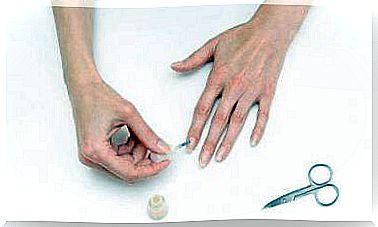Breathing Techniques For Childbirth
Breathing techniques during childbirth vary depending on the timing and rate of contractions. We will explain what they are and how they can help you.

Breathing techniques for childbirth are much talked about in the news. They have become one of the essential pillars in preparing for the time of childbirth.
We know that breathing techniques help the mother to better endure childbirth. They activate the circulatory system and help maintain muscular effort. In addition, they relieve pain which, as we know, is very intense.
These techniques also improve the oxygenation of the baby. It’s about taking deep breaths at a constant pace. In this article, we’ll walk you through these techniques so you can be prepared for your birth.
How do breathing techniques help with childbirth?

Maintaining rhythmic, deep breathing during childbirth has many benefits. This is even supported by scientific evidence. For example, a study published in the Journal of Integrative Medicine concludes that:
These techniques are also linked to a reduction in the number of assisted deliveries. The explanation is simple. Along with the feeling of tension and pain, breathing tends to quicken and be shallow. This reduces the amount of oxygen you inhale and deliver to the baby. Your muscles, on the other hand, work with less force.
Knowing breathing techniques that help you cope with this time of fear and tension allows you to have a deeper breath. By getting the right amount of oxygen, you will reduce the risk of complications for your baby.
What breathing techniques do we use?
The fundamental pillar of these techniques is to inhale at a constant rate through the nose. You have to do it very quietly. Then you need to expel the air through your mouth, without squeezing your lips. It is very important not to hold your breath during childbirth.
In addition, it must be taken into account that breathing techniques change as the birth progresses. We will therefore explain the different steps to you.
Start of childbirth
This is the time when the contractions start but are still quite spaced and not so accelerated. In this phase, slow or abdominal breathing is generally used.
- This technique involves gently inhaling air through the nose while inflating the abdomen.
- Then try to expel the air more slowly than when inhaling and through the mouth. Breathe out three times more than what you inhaled.
- Between one breath and another, the ideal is to take a short break. This breathing technique helps manage the pace of contractions and relieve pain.
Progression of contractions

As the contractions increase, the best technique is light, accelerated breathing. During this phase, it is completely normal to see the breathing speed up.
- This technique consists of inhaling more briefly. However, it is necessary to continue to proceed in the same way: you breathe in through your nose and you breathe out through your mouth.
- You should try to breathe in some air when the contraction begins. Then try to breathe it out when the contraction ends. You can do this in several evictions or in one.
During this phase, the breaths are usually done at chest level because greater speed is needed to be able to maintain the baby’s oxygen levels (and ours!).
The final moment
When it comes time to give birth, the breathing technique that is used most often is called expulsion breathing.
- It involves inhaling a large amount of air until you feel as though you have filled your lungs.
- When the urge to push is very strong, you should lean your chin towards your chest. As you push, let the air out gradually. Each time this happens, repeat this technique.
- Ideally, you should breathe naturally between efforts to recover.
To conclude
Breathing techniques for childbirth are very helpful as they help relieve pain and face contractions with strength and energy. It is normal that you are afraid that this moment will come and that you will forget all these preparations for childbirth.
However, preparation classes and midwives will help you, during childbirth, to make these techniques almost intuitive. Either way, try to practice them before the big time comes.









